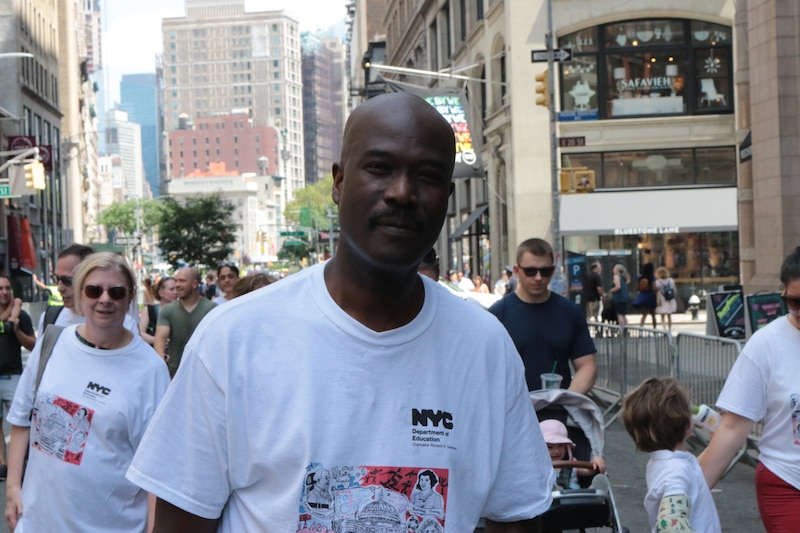Thousands of people with disabilities and their advocates marched through Midtown Manhattan Sunday morning for the city’s fifth annual Disability Pride Parade, many of them public school parents and teachers.
Some came to spread the message that people with disabilities aren’t invisible. Others carried signs calling out Congress for falling short of its promise to fund a significant chunk of special education services. A contingent of people who navigate the city by wheelchair called on the MTA to make more subway stations accessible.
As they marched from Madison Square Park to Union Square, Chalkbeat caught up with parents, advocates, students, and education department staff to ask what disability pride means to them. Here’s what they told us.

Amber Harris, a 23-year-old former student at Manhattan’s Life Sciences Secondary School, said it was important for people who have learning disabilities like her to be visible.
“I have a disability and I want to support people who do,” she said, flanked by her mother, a teacher at P.S. 146 in East Harlem. “You should always be proud of who you are.”

Cindy Romerick attended the parade for the first time this year because “I want to be part of celebrating their achievements,” she said, referring to students with disabilities. Her six-year-old son, Umar, attends Harlem Link Charter School and has an Individualized Education Program, also known as an IEP, to help address his ADHD.
Romerick said she wants to spread the message that it’s important for students with disabilities to be pushed to meet the same goals as their peers. “I want them to work towards meeting a regular end goal, not just an IEP end goal,” she said.

Trishia Bermudez said she came to the march to show other parents that they have allies who are also trying to navigate the special education system. She said it isn’t always easy to successfully advocate for services; city statistics show thousands of students don’t get all the help they’re entitled to.
She attended the parade with her six-year-old son, Matthew, who has a rare genetic disorder that caused a series of developmental and intellectual delays. He attends a District 75 program, which serves over 25,000 city students with the most complex disabilities. “I want to bring a face to the journey that a lot of parents are on,” she said.

José Simián has marched in the city’s disability pride parade three times and is a board member for INCLUDEnyc, which helps support and advocate for young people with disabilities. He attended with his daughter, Levi, who has autism. “The same time you become a parent of a child with a disability, you also become an activist,” he said. “Disability is the next frontier to become a really inclusive society.”

Shauntey McFarlane, who taught English language arts at Brooklyn’s Elijah Stroud Middle School but expects to change schools this fall, attended to be visible to her students with special needs. “I’m just here to let them know teachers of the DOE support them,” she said.

Ketler Louissaint is responsible for overseeing all of District 75, a collection of schools that serve students with the most severe disabilities. He’s been to all five of the city’s disability pride parades and encourages schools in his district to help turn parents out for it. It’s “showing the whole city of New York that people with disabilities matter — and advocate for inclusion,” he said.
Hundreds of people connected to city’s schools turned out, with parents, teachers and department staff commanding their own section of the parade.


